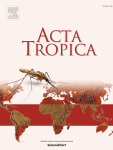Introduction
Foodborne trematodes, despite large-scale socioeconomic programs, remain a global health problem. Liver fibrosis is one of the most common complications of opisthorchiasis in piscivorous mammals and humans (Pakharukova and Mordvinov, 2022). In this regard, it is important to elucidate the pathogenesis of liver fibrosis in opisthorchiasis. Recent studies indicate a correlation between angiogenesis and liver fibrogenesis (Lafoz et al., 2020). Previously, other models of chronic liver injury have shown an increase in the expression of several proangiogenic factors, including intercellular adhesion molecule CD34 (Su et al., 2021). Angiogenesis in hepatic fibrosis has also been reported to mediate immune-cell recruitment (Wynn and Vannella, 2016) as well as hepatic-stellate-cell activation (Tsuchida and Friedman, 2017). Activation of angiogenesis has been shown for several species of parasitic worms, including Opisthorchis viverrini, Clonorchis sinensis, Schistosoma spp. and was associated with their carcinogenic potential (Dennis et al., 2011; Machicado, Marcos, 2016; Huwait et al., 2021). However, evidence that O. felineus activates angiogenesis is limited. Also, CD34 correlates with the level of fibrotic tissue and is a potentially important therapeutic marker in the treatment of schistosomiasis (Abd El-Aal et al., 2017; Hasby Saad and El-Anwar, 2020). On the other hand, Schistosoma mansoni infection has been found to promote deposition of amyloid in the liver (Hamed et al., 2006). Hepatic amyloidosis is characterized by amyloid deposition in the liver parenchyma or in the walls of blood vessels. Accumulation of amyloid over time leads to organ dysfunction due to protein aggregation, causing cellular dysfunction, disturbances of tissue architecture, and activation of neoangiogenesis (Rosenzweig and Kastritis, 2020).
The canonical therapy for opisthorchiasis consists of the use of anthelmintics, which are not aimed at correcting and preventing fibrotic complications in the liver (Liau et al., 2023). There are also no clear international recommendations regarding the treatment of liver fibrosis. Activation of angiogenesis during O. felineus infection opens up new links in the pathogenesis of the disease and the “parasite-host” relationship. Thus, it seems relevant to investigate the mechanisms and factors contributing to the progression of liver fibrosis during O. felineus infection in order to find an adequate multimodal therapy.
The aim of this study was to assess for the first time the state of liver angiogenesis at several time points during O. felineus infection in golden hamsters, in order to compare it with angiogenesis in humans during chronic opisthorchiasis and to evaluate a possible correlation of neoangiogenesis with the progression of liver fibrotic complications.






Add Comment